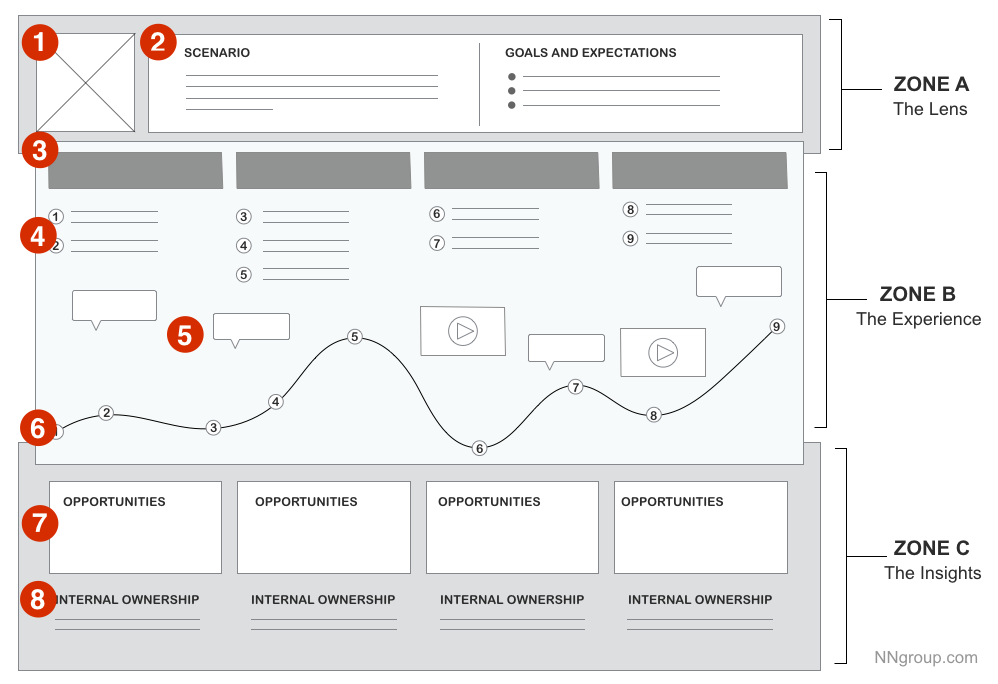Since a service blueprint reflects the operations of an organization, these artifacts must be created by pulling frontstage and backstage inputs from real employee accounts and validating these inputs through internal research. This research and validation will likely need to traverse functional groups across an organization. The basic ingredients of a good serve blueprint includes: - Evidence – This represents the physical and digital touchpoints, or focal points for interaction. With the restaurant scenario, evidence could be a billboard or menu or emailed coupon.
- Customer Actions – A slimmed down representation of the steps, choices, activities, and other actions a customer takes with an organization to reach a particular goal.
- Frontstage Actions (What the Customer Sees) – A customer does not just act – they interact with you, so this layer should reflect what the customer sees during touchpoints along the journey. Who do they communicate with? What tools do they use to transact with the organization? What is the trigger? What happens next? How is the transaction completed?
- Backstage Actions (Unseen Steps and Activities that Support Frontstage Actions) – This is the most important information in this artifact, reflecting the actions taken by employees unseen by the customer (e.g., cook in the kitchen) or a frontstage employee who does something unseen by the customer (e.g., waiter entering order into a touchscreen system).
- Support Processes – This reflects the steps that must take place internally to fulfill the customer’s journey. This typically reflects actions from employees who do not regularly interact with customers
There are various additions or modifications on how one can produce a Customer Journey Map. However the basic steps to developing an effective Customer Journey Map are as follows: - Identify the Persona/Point of view: There can be numerous types of users who come into contact with your product or service. The Customer Journey Map should focus on one.
- Identify the Scenario/Goal: Choose one scenario or one goal which would cause your previously identified Persona to interact with your product/service.
- List the Stages/Phases: Based on the Scenario/Goal you’ve identified, list all the stages of the journey that the Persona would take to reach their Goal. It is important to list these from the customer’s perspective and not your own.
- List Actions, Mindsets and Emotions: The key component of the story being told by the journey map is what the Persona is doing, thinking and feeling. Under each phase list the actions the customer is taking along with the associated thoughts and feelings. This information should be gathered from research collected through methods such as Contextual Inquiries, Field Data and Diary Studies.
- List Touchpoints and Channels: The map should correlate all touchpoints and channels with the goals and/or actions of the customer. This helps to identify areas of potential communication/service breakdowns.
- Identify Opportunities for Improvement: Use the insight you gathered to point out occasions where you can improve the customer experience and assist them in accomplishing their goal.
|  ISG Playbook
ISG Playbook APIs
APIs
